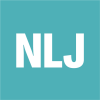Social Relations at the Collective Level: The Meaning and Measurement of Collective Control in Research on the Psychosocial Work Environment
DOI:
https://doi.org/10.19154/njwls.v3i3.3010Keywords:
Health, working environment & wellbeing, Identity, meaning & culture, Organization & managementAbstract
In this article, we suggest that organizational-level social relations should be defined and measured as workplace norms. We base this argument on new research on the components of the psychosocial work environment and on the availability of new techniques for measuring and analyzing workplace norms as organizational properties. Workplace norms emerge from interactions and negotiations among organizational actors, through which patterns of behavior, attitudes, and perspectives become defined as legitimate. This is an underestimated dimension of the psychosocial work environment that should be assessed with two types of data: self-reports by employees of their experiences in the workplace (task-level control) and self-reports by employees and employers of collective or group-level norms. Hierarchical linear modeling is an especially useful tool for analyzing the relationships between workplace norms and different organizational outcomes because it allows researchers to separate the effects of individual-level variables from group or organizational-level factors. Our approach is anchored in the Nordic perspective of the work environment developed over the past 50 years.Downloads
Published
How to Cite
Issue
Section
License
The Copyright Holder of this Journal is the authors and the Journal. Normally the journal use the CC-BY NC-ND 4.0 licence.
Exceptions to the license terms may be granted
If you want to use content in the Journal in another way then described by this license, you must contact the licensor and ask for permission. Contact Annica Asp at annica.asp@kau.se. Exceptions are always given for specific purposes and specific content only.
Sherpa/Romeo
The Journal is listed as a blue journal in Sherpa/Romeo, meaning that the author can archive post-print ((ie final draft post-refereeing) and author can archive publisher's version/PDF.
Copyright of others
Authors are responsible for obtaining permission from copyright holders for reproducing any illustrations, tables, figures or lengthy quotations previously published elsewhere.
Archives policy
All published material is archived at the Danish Royal Library in conformity with the Danish rules of legal deposit.
Plagiarism screening
We do not screen articles for plagiarism. It is the responsibility of the authors to make sure they do not plagiate.



